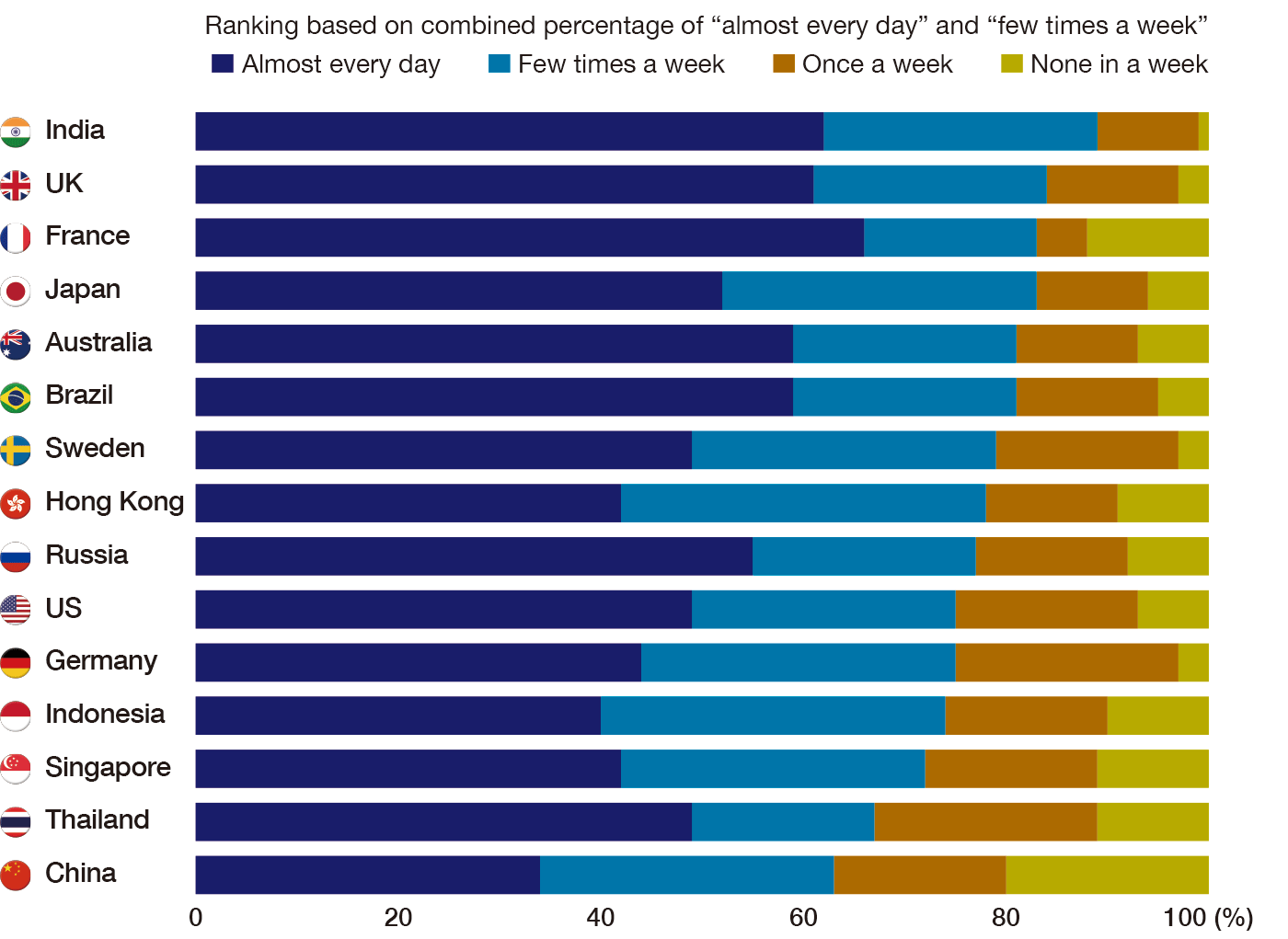An excerpt from the Survey of Global Values and Perspectives on Leadership and Organizations
Creating Good Relationships with Staff
In our previous report, we have talked about what qualities make great leaders and have compared leadership styles in different countries. This time, we focus on the relationships between managers and staff and examine what factors may serve as keys in improving communication and creating a good relationship.
1. Relationships between managers and staff
Participants were asked to indicate their level of satisfaction with their relationships with their managers. They were asked the question "How is your relationship with your manager?" and had to select one of four choices: "Good", "Somewhat good", "Not so good", and "Bad". Results are shown in Figure 1 below.

n = 1,500 (100 from each country)
4-point scale (1: bad, 2: not so good, 3: somewhat good, 4: good)
Coaching Research Institute (2015)
Indonesia ranked the highest, while other East and Southeast Asian countries ranked in the bottom 5. What could be the reason behind this result? To understand this, let us look at the next section.
2. Correlation between satisfaction with relationship and sufficiency of communication
When we examined what factors were related to ratings of the relationship between manager and staff, "sufficiency of communication" with the manager turned out to be the factor which had the strongest correlation with the level of satisfaction with the relationship. In this survey, respondents answered the question, "Do you feel you have enough communication with your manager?" They selected one of four choices: "enough", "somewhat enough", "somewhat lacking", and "lacking".

n = 1,500 (100 from each country)
Relationship: 4-point scale (1: bad, 2: not so good, 3: somewhat good, 4: good)
Amount of Communication: 4-point scale (1: lacking, 2: somewhat lacking, 3: somewhat enough, 4: enough)
Coaching Research Institute (2015)
As we can see in Figure 2, there was a positive correlation between 'satisfaction with relationship' and 'sufficiency of communication' (r=0.83).
Considering this more carefully, it is expected that the 'sufficiency of communication' in a relationship is determined by both the 'amount' and 'quality' of the communication. The following sections examine these characteristics of communication in our target countries.
3. Frequency of communication between managers and staff
First, let's examine the frequency of communication between managers and staff. The survey asked respondents "How often do you talk with your manager?" and gave the following four choices: "almost every day", "a few times a week", "once a week", and "not even once a week". Figure 3 shows the results.

n = 1,500 (100 from each country)
Coaching Research Institute (2015)
When we combined percentages of "almost every day" and "a few times a week", we can see that India, UK, and France are the top 3 countries in terms of frequency of communication. If we look back at the previous sections on "relationships between managers and staff" and "sufficiency of communication with managers", we see that India and UK are also in the top 5.
Meanwhile, China and Singapore occupied the bottom 3 positions. Likewise, when we look at results for "relationships between managers and staff" and "sufficiency of communication" , these countries also ranked among the bottom 5.
While there may be certain exceptions, the frequency of communication appears to be tied to the 'satisfaction with relationship' and 'sufficiency of communication' between managers and staff.
4. Percentage of time spent talking by managers and staff
For the percentage of time spent talking by managers and staff, the survey asked respondents, "When talking with your direct supervisor regarding work, who spends more time talking?" Respondents had to select from three choices: "my manager spends more time talking", "I spend more time talking to my manager" and "my manager and I spend about the same amount of time talking".
The results of this survey identified a positive correlation between the percentage of respondents who selected "my manager and I spend about the same amount of time talking" and "sufficiency of communication" (r=0.7). This suggests that when managers and staff spend about the same amount of time talking in their conversations, staff feel that there is sufficient level of communication occurring.
In contrast, the percentage of respondents who selected "my manager spends more time talking" had a negative correlation with "sufficiency of communication" (r=-0.66).

n = 1,500 (100 from each country)
Coaching Research Institute (2015)
The percentage of respondents who selected "I spend more time talking" was low in all countries.
The UK, Sweden and the US were ranked highest in terms of managers and staff having equal amounts of talking time in conversations. China, Japan and Hong Kong ranked the lowest, and these countries also ranked lowest in "satisfaction with relationship" between managers and staff and "sufficiency of communication" from the previous sections.
This suggests that when managers and employees do not have 'two-way conversations', 'satisfaction with the relationship' and the 'sufficiency of communication' between the two parties suffers.
5. Take-away
We looked at what factors are important to having good relationships between managers and staff. Staff defined "good relationships" with supervisors as having a sufficient level of communication. In order for the feeling of sufficiency to be high, both the frequency of conversations and ratio of talk time between staff and managers were important. However, these findings did not apply to all of the countries in our list, and there may be additional factors which come into play that should be examined in future studies.
(*1)
Survey of Global Values and Perspectives on Leadership and Organizations(2015)
Survey participants: Non-managerial staff between the ages of 25-39
Survey method: Online survey